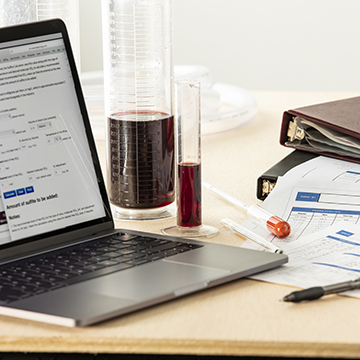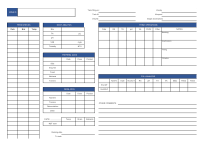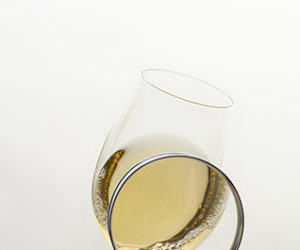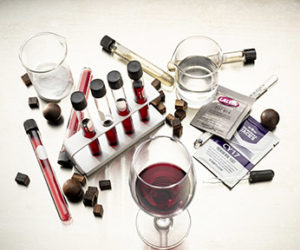
For winemakers, harvest time is a period of intense activity, and essential decisions and preparations need to happen well in advance of crushing day for things to go smoothly. These decisions include choosing the perfect picking time, buying of all sorts of dry supplies (yeast, potassium metabisulphite, nutrients, etc.), and making sure that all of your equipment is up and running.
No matter your level of winemaking expertise, this article includes everything you need to step up your recordkeeping game for your next batch. Whether you are a first-timer or a senior cellar rat, you have probably heard that “timing is everything” in winemaking. If you prepare well in advance, you will no doubt still be busy, but you will save yourself tons of time, especially when it comes to decision making.
In winemaking, there is only so much that can be controlled — the weather influences the grapes, a cold cellar slows down fermentation, or a random spoilage yeast invades a promising wine. It is wise to keep good records during the winemaking process to maximize control over your wines. Only by logging in dates, treatments, wine analysis, and tasting notes so we have them to review when needed do we learn what works, what doesn’t, and what we need to improve.
Keeping a very detailed log of each wine you make will allow you to track your wine’s daily progress from the vineyard to the bottle, and it is a great reference tool for the next time you want to make a similar wine. When, in a couple of years from now, you want to replicate that fantastic 2020 vintage wine that has continued to evolve into a fantastic vintage in the bottle, you will be thrilled you kept those notes. Which yeast did you use? Did you add malolactic bacteria? Did you adjust the acid? What were the fermentation temperatures?
Benefits of Keeping a Winemaking Log
A well-kept winemaking log can help you to arrive at smarter decisions and save tons of time. As the saying goes; if it’s not recorded, it didn’t happen. Here are some of the biggest benefits I see to keeping sound records throughout the winemaking process:
Decision-making: Understanding how much of which additives you’ve put in (and when), and being able to come back to it anytime later will help you to make smarter decisions.
Time-saving: In well-kept winemaking records, the log can help you keep the timing of each step straight. Having the information altogether, and somewhere handy, will save you tons of time during those busy days.
Own your wines: In the long run, once you’ve gone through a couple of fermentations, you will be able to own your game and trace those repetitive patterns. It will, for sure, give you a much more insightful understanding of your wines.
Improve and grow: Management consultants say that the key to improvement is setting adequate targets or SMART goals (the acronym is short for specific, measurable, attainable, relevant, and time-bound). In terms of recordkeeping, it is the “M,” or measurable, that is absolutely vital. Without proper records, it would be impossible to measure where you are and to keep track of your progress.
Problem-solving: Did you screw up a bit? Having more control over the variables will not only reduce the chances of making mistakes, but if you happen to face some challenges due to an error, it will be much easier for you to pinpoint where things went wrong and approach the problem to solve it efficiently.
What Information to Record
There is no such thing as the one perfect log that suits all types of winemakers. To make your logs efficient you must choose what’s important for you to record.
As with most activities you set out to do, it is vital to answer the four Ws (and the one H):
What: If you are getting ready to make your first wine, be aware that down the line, you’ll wish that you had everything all nicely labeled with proper traceability. Come up with names for your lots and make them comprehensive and easily recognizable.
When: As winemaking is all about timing, keeping a close eye on when things happen will give you the right perspective for decision-making. Always write down the dates.
Who: When you are a one-member crew, this is less important, but as teams start growing in number, it is essential to know who did what. Large wineries have protocols set up to understand who was responsible for each step; just in case something happens, you can track it back quickly, understand why, and take preventive actions to avoid a repetition of mistakes. If you make wine with a partner, consider adding this information to your records.
Where: If you have different sizes, shapes, or types of vessels, it is crucial to know where each lot is at a given time. If you have to scatter your winemaking to a few areas in your house, those locations go here too. Save yourself from future headaches.
How much: Quantifying is key! When talking about additions, also make sure you write down the units: 4 g/L are not the same as 4 pounds/gallon, so just writing down “4” won’t get you anywhere when it comes time to refer back to old vintage notes.
Here is a list of the chemical analyses that I believe should always be recorded:
• Brix/sugars
• pH
• TA (titratable acidity)
• VA (volatile acidity)
• FSO2 (free sulfur dioxide)
• TSO2 (total sulfur dioxide)
• Malic acid
• Lactic acid
• RS (residual sugar)
Don’t forget about the temperature!
Chemistry is essential, but the temperature is one of the most critical physical variables in winemaking.
On top of paying close attention to fermentation temperatures, keep an eye on the ambient temperature where you store your wine. It will give you the right frame to understand at what temperature the wine will settle down. If working in a rather cold cellar, all chemical and biological processes slow down and might even stop. Likewise, if your cellar gets too warm, your fermentations will most likely speed up, bringing some negative consequences such as yeast dying, or getting a jammy fruit in your wine.
Sensory Notes Are Also Important
As if you were crafting some new recipe in the kitchen, pay attention to your senses. They are the source of valuable information, and observation is a great skill when making wine.
On your sheet, leave space for “comments,” where you can include some more sensorial observations. Take notes on what the juice looks, smells, or tastes like each time you are working on your wine (like inoculating, racking, filtering, clarifying). Observe how it behaves before and after working on it. This way, you’ll start to have a better grip on how a wine develops from start to finish.
Did something unexpected happen? Did you punch down more often than usual? Write it down, it’s all valuable information.
Log your dry supplies as well. On a different sheet, write down all the products you are using, like yeast, tartaric acid, enzymes, tannins, oak, etc. As you receive them, write down the providers, lot numbers, expiration dates. If you have any problems with a specific product, you will be able to track it down.
Traceability
Traceability is the ability to ensure the tracking, if possible, in real-time, of activities and information flow linking activities. For you to be able to check where your Amazon package is located in real-time, somebody has to log the information in every step of the process. By the same logic, you will have to link the information flow during the winemaking process. Naming your wines with a unique code is the same as having a proper tracking number for your parcel.
A rather logical and well-accepted naming system among commercial winemakers worldwide is as follows:
YY-VAR-#
Where:
YY: Year of vintage (e.g., 18 for 2018).
VAR: The two- to three-letter code for your grape variety (e.g., VIO-CS-PN-MAL). In case you work with brands or blends, you can use other three-letter codes.
#: Sometimes a number can be used to indicate the stage of the process, for instance:
1. Alcoholic fermentation complete
2. Malolactic fermentation (MLF) complete
3. Racking out of fine lees
4. Clarified
5. Filtered
So if a tank is labeled 20-MAL-2, it means that it is a 2020 vintage Malbec that is MLF complete. The concept is rather simple, but it helps a lot when working with multiple and different lots.
This naming system is the wine’s ID/tracking number, make sure if you use it that you refer to it identically throughout the whole process.
Ways to keep your winemaking log
We live in a world where handwritten notes are becoming a thing of the past, and electronic recordkeeping is now commonplace. Electronic records make illegible handwriting a thing of the past and facilitate improved communications.
Hand-held devices allow for easy on-the-go updated records. Shared documents and the sharing of files can significantly improve communication within bigger teams and even those who you share the wine with. Even with these benefits of electronic records, there’s still romance in for scratching notes on a pad of paper.
Here are some of the options available for winemakers around the globe today:
1. Pocket Journal
If you are the bohemian type that enjoys writing extensively, you can use a pocket-size notebook and create a daily journal of all the happenings in the winery.
Pros: The addition of lots of detail will enrich your learning process, and you can also add notes on your personal experience.
Cons: Extensive note keeping can be time-consuming, and information can be challenging to find if working with multiple batches.
Note: The 2.0 digital version was developed to keep a daily journal in the Notes app on your phone — sweet and simple!
2. Classic Binder
As if it were the wine’s resume, the ability to keep all the information regarding every wine on one page where it is all easily and quickly accessible is an absolute game-changer. We have created and shared a comprehensive and easy-to-use sample of what this can look like, which you can download for free, below.

Pros: Improves time management and eases decision-making.
Cons: Paper can get stained, crinkled, and ripped. To help with this issue you can get a waterproof (wineproof) binder and plastic sleeves to help protect the pages.
3. Digital Excel Spreadsheet
Following up with the “resume design,” having a one-page digital database of your wine may be the best option if you are more of a technologically-inclined winemaker.
Pros: You can add infinite Excel formulas to be on top of your game. Also, some apps like Evernote or Google Drive will allow you to edit your sheet from your phone, making it super easy and allowing the information to be kept close at hand at all times.
Cons: Let’s face it, for most real-life scenarios, home winemaking doesn’t always imply lots of space, and this often extends to proper office space as well, leading to fewer places to keep your devices handy and dry. And recording notes is best done immediately while they are fresh on your mind.
4. Apps or Traceability Systems
These days, tons of apps are available to help you track every single detail throughout the winemaking process.
Pros: All you need in the palm of your hand.
Cons: Unlike the previous options, they are not available free of cost. Some don’t like looking at small cell phone screens also.
What makes the best winemaking sheet?
Here are seven key ways to create a useful winemaking log that will benefit you in your winemaking venture for years to come.
1. Less is more: Be pragmatic
Be straightforward and think about why you are recording the information and how it will be useful in the future. Only record the truly important information. Sometimes, writing too much just creates clutter and makes it more difficult to find the truly important information.
2. Keep it tidy
Visually appealing and well-organized information is vital. Starting with a clean design will go a long way. Yes, if you are a techy guy/gal, you could create a sexy spreadsheet that calculates it all for you, but be strategic where to invest your time
and creativity.
3. Be consistent: Log continuously
Even if the day has been super long, get yourself into the healthy habit of writing down your data on a daily basis. Tomorrow, you’ll find a better excuse not to do it, and by the time something unpredictable comes up, it will be way too late. It will take you much longer to solve problems when you have to go back through everything that happened a long time ago! A continuous log will give you instant and easy access to all your info.
4. Think long-term
A complete winemaking log will span from when you get your grapes (or juice) to the day the last drop is gone. When seeking to understand how your wine ages or how to improve your technique, you’ll want to refer to notes from across the entire time.
When you’ve got a couple vintages under your belt you will have enough data so you can compare and contrast, evaluate, and draw conclusions.
5. Have it handy at all times
As much as we don’t want to get our sheets dirty, make sure you keep your notes, no matter how they are recorded, close so you actually use them. It is not serving its purpose if it is lying in the trunk of your car.
6. Be practical
I can’t stress enough how important it is to be functional and realistic. No matter the operation’s size, one must think as though you are keeping records professionally. As if you were making wine for that winemaker you admire most.
7. Be open to change
There is no such thing as the perfect log that matches all the requirements of winemakers the world over, so be open to continuous growth. As is pretty much everything else in winemaking, this is also a matter of trial and error. Observe what works and what doesn’t work for you.
Time to recap
A winemaking log will help you to make the best and most time-saving decisions throughout the winemaking process. Use a journal, binder, or electronic device equipped with easily updateable spreadsheets or apps — whatever you’re most comfortable with! Traceability will enable you to track each step from the vineyard to the bottle. Be pragmatic, consistent, and think long-term. Finally, don’t forget to log the chemical analyses, dry supplies, temperature, and sensory notes to ensure you’re creating records like a pro winemaker.






